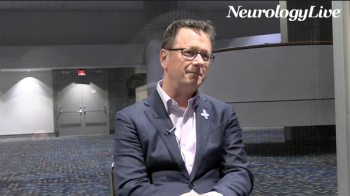
Understanding Biomarker Trends in Alzheimer via Roche’s NeuroToolKit
The toolkit’s assays contain several biomarkers, including Aß 1-42, Aß 1-40, α-syn, GFAP, IL-6, neurogranin, NfL, phosphotau181, S100B, sTREM2, total tau, and YKL-40.
At the
The toolkit’s assays contain several biomarkers, including amyloid-ß 1-42, amyloid-ß 1-40, α-synuclein, glial fibrillary acidic protein (GFAP), interleukin-6 (IL-6), neurogranin, neurofilament light chain (NfL), phosphotau (181P), S100B, sTREM2, total tau, and YKL-40.
To find out more about the potential clinical implications for the use of this NeuroToolKit in research, NeurologyLive spoke with Rachelle S. Doody, MD, PhD, global head, Neurodegeneration, and franchise head, Alzheimer’s Disease Neurodegeneration, Roche/Genentech. She offered her perspective on the data presented at AAIC, and the role it might play in therapeutic development, among other topics.
NeurologyLive: Could you offer some background on the NeuroToolKit and its biomarker panel for the clinicians who aren't familiar with it?
Rachelle S. Doody, MD, PhD: The NeuroToolKit is really a fantastic tool, what it really does is it looks at the health of a neuron with certain specific analytes—I'll list them all out for you in a minute. It looks at that the operation of the synapse, and it looks at the surrounding inflammatory cells, so it's a way to get in there and check what's happening to these different parts of the brain. It includes amyloid-ß 1-42, and amyloid-ß 1-40. It includes phosphotau181 and total tau. It also includes α-synuclein, neurogranin, GFAP, IL-6, beta, S100B, sTREM2, YKL-40, and NfL. You really march through the neuron and the surrounding area, and you can ascertain what's happening to the markers that reflect those activities.
How is this toolkit currently being utilized, and what was presented at AAIC?
The NeuroToolKit is currently under development. We're using it for research, but not just research here at Roche, but research that many different people are engaged in. What we want to do is use our work in our clinical trials and our methodologies developed in Roche Diagnostics to make replicable, easy-to-use tools that can help us all understand what's happening to biomarkers in Alzheimer disease. Right now, the NeuroToolKit uses CSF [cerebrospinal fluid]. But someday—and we're already working on it—different analytes, or maybe all the same analytes, could be measured in blood. We're using it in research settings, both within Roche and outside to try to understand the disease and how these different biomarkers reflect more tissue-level pathological changes.
The information that we presented at AAIC comes from our own clinical trials—6 different clinical trials. What we did is we looked at these 12 different markers to try to understand how they fit together and what story they're telling us in Alzheimer disease. We looked at what correlates with what, and almost everything correlates with each other except IL-6. We looked at what things are driven by age, and several of the biomarkers increased with age, so we have to factor that in. Anytime we look at that biomarker in a clinical trial, we looked at which biomarkers stayed the same and which ones change over time because our trials are a couple of years long. So now we know that certain biomarkers can be relied upon to change over time. We're trying to read the patterns and understand how we can make use of these different biomarkers to answer research questions.
Do you foresee a role that this toolkit could play in measuring the effect of combination approaches down the line?
What you've got to start with is a reliable tool. Something that almost anybody can measure almost anywhere and get the same results. That's something that we're good at in Roche Diagnostics, and we're putting focus there to start with. Once we have that—and we think we do—we can then start to look at what the signature is on the NeuroToolKit for a particular disease. And we are using the NeuroToolKit, not just in Alzheimer, but in Parkinson disease and Huntington disease, and others. The next thing we want to look at is how does it change within those diseases? That's undergoing research both within Roche and in different cohorts with investigators with whom we collaborate. Once we have an understanding of what kinds of drugs change the NeuroToolKit and in what kind of way, it's ideal to study it with combinations because you'll see whether the combination alters the pattern of what you expect. I think that is a great place to go in the not-too-distant future.
Transcript edited for clarity.
REFERENCE
Rabe C, Thorne N, VOyle N, et al. Evaluation of the Elecsys Neurotoolkit Panel in Early Alzheimer’s Disease Populations Across Six Clinical Trials. Presented at: AAIC; July 26-30, 2021; Virtual. Abstract 52033.
Newsletter
Keep your finger on the pulse of neurology—subscribe to NeurologyLive for expert interviews, new data, and breakthrough treatment updates.


































